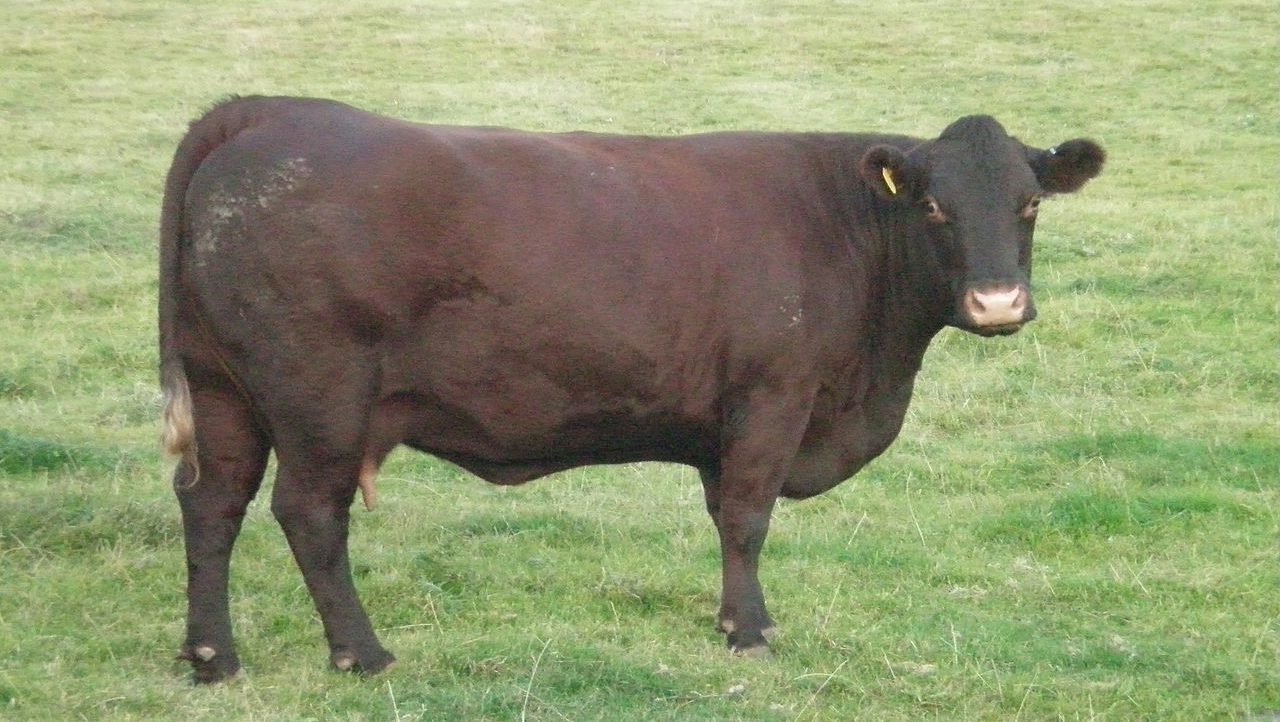Sussex are a breed of red beef cattle from the Wealds of Sussex, Surrey, and Kent in southeastern England. They were traditionally used as a draft ox and were selectively bred for beef production in the late 19th century.
They have been exported to many countries, with the largest population found in South Africa. The Sussex is one of several red cattle breeds from southern England and was considered to be one of the finest cattle in the kingdom in the early 19th century. The breed society was formed in 1879, and a herd-book was started in 1855. The Sussex has good resistance to heat and tick-borne diseases and was crossed with French Limousin and Salers in a breeding program to increase its growth rate. A polled Sussex was created in the UK and South Africa by cross-breeding with red Aberdeen Angus. The conservation status of the Sussex is "not at risk" globally and "at risk/endangered" in the UK.
They have been used as draught oxen for centuries and were known for their powerful forequarters. However, their hindquarters were not as developed, which made them not ideal for beef production. In the 19th century, they were selectively bred for beef production and exported to various countries, including South Africa, New Zealand, and Zambia. In South Africa, the Sussex cattle have become widely popular due to their ability to resist tick-borne diseases and tolerate heat better than other British breeds.
In the 1970s and 1980s, the British breed society instigated a breeding program aimed at increasing the growth rate of the Sussex to make it more competitive with other beef breeds. However, this cross-breeding with other breeds was believed by some farmers to have compromised the traditional merits of the Sussex, including its ability to forage, ease of calving, milkiness in cows, and good temperament.
In recent years, the Sussex breed has been listed as "at risk" or "endangered" in the UK and is included on the Rare Breeds Survival Trust's watchlist. Nevertheless, the breed continues to be found in various countries around the world, including Australia, Brazil, Botswana, Eswatini, Malawi, Namibia, Paraguay, Peru, the Seychelles, Zambia, and Zimbabwe.
Source: Content and Image from Wikipedia.

